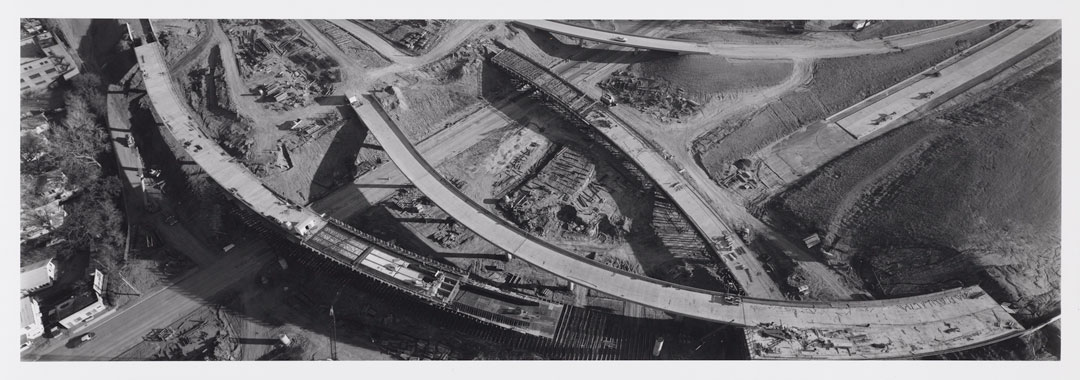Object of the Week: Aerial View, Tulsa, Oklahoma
There is something peculiar about the way we attribute the clarity of some photographs to the world itself. I try to reinforce that paradox by making photographs that convince the viewer that those revelations, that order, that potential for meaning, are coming from the world and not the photograph.
– Frank Gohlke, 1979
Aerial View, Tulsa, Oklahoma is a photograph by American photographer Frank Gohlke, taken in 1981. One of 10 artists included in the groundbreaking 1975 exhibition New Topographics: Photographs of a Man-Altered Landscape, Gohlke emerged as an important voice challenging then-prevailing trends in modern photography.[1] Working against romanticized depictions of nature, Gohlke and others in the exhibition produced photographs described by the curator, William Jenkins, as “eschewing entirely the aspects of beauty, emotion and opinion.”[2]
Though Jenkins felt otherwise, one could certainly argue that Gohlke’s Aerial View, Tulsa, Oklahoma is in fact a beautiful and emotive image. Sure, it is far from the Platonic ideal of nature, but the photograph’s composition—with its nested and overlapping arcs, dramatic shadows, and abstract patterning—contains within it a certain beauty. It might not be Ansel Adams’s Half Dome, but it is a photograph that elevates otherwise banal and unattractive subject matter, poetically calling attention to man’s impact on the natural world.
Importantly, Gohlke and his New Topographics cohort reinforced the notion of landscape as a manmade concept. It is a word and idea predicated on a human subject who turns the land into an object and, artistically, into an image. The very definition of the word hinges on an aestheticized understanding of nature. In Aerial View, Tulsa, Oklahoma, Gohlke deftly mobilizes photography to highlight the extent to which the landscape is indeed a manmade image, as well as an object—or resource—to be taken and transformed.
The “new” American topography on offer in 1975’s New Topographics was no longer unspoiled or pristine wilderness, but a country comprised of suburban sprawl, connecting interstates, and parking lots. Whether or not we find that beautiful is up to us to decide. Luckily, this work and others from SAM’s permanent collection are on view in the upcoming New Topographics exhibition on view in the third floor Modern and Contemporary Galleries.
– Elisabeth Smith, Collections Coordinator
